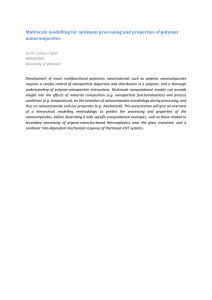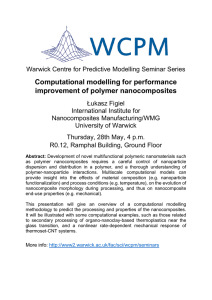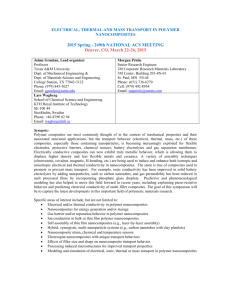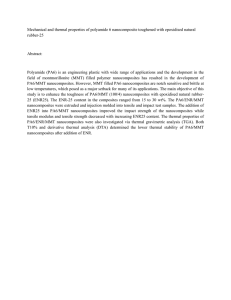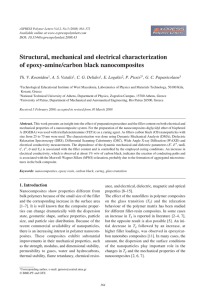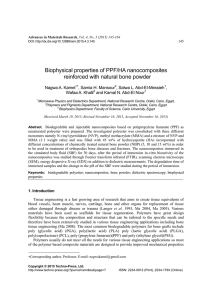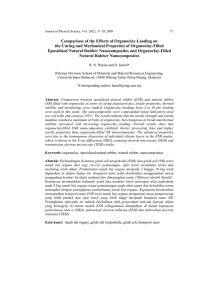ABSTRACT: The mechanical properties and crystalline ...
advertisement
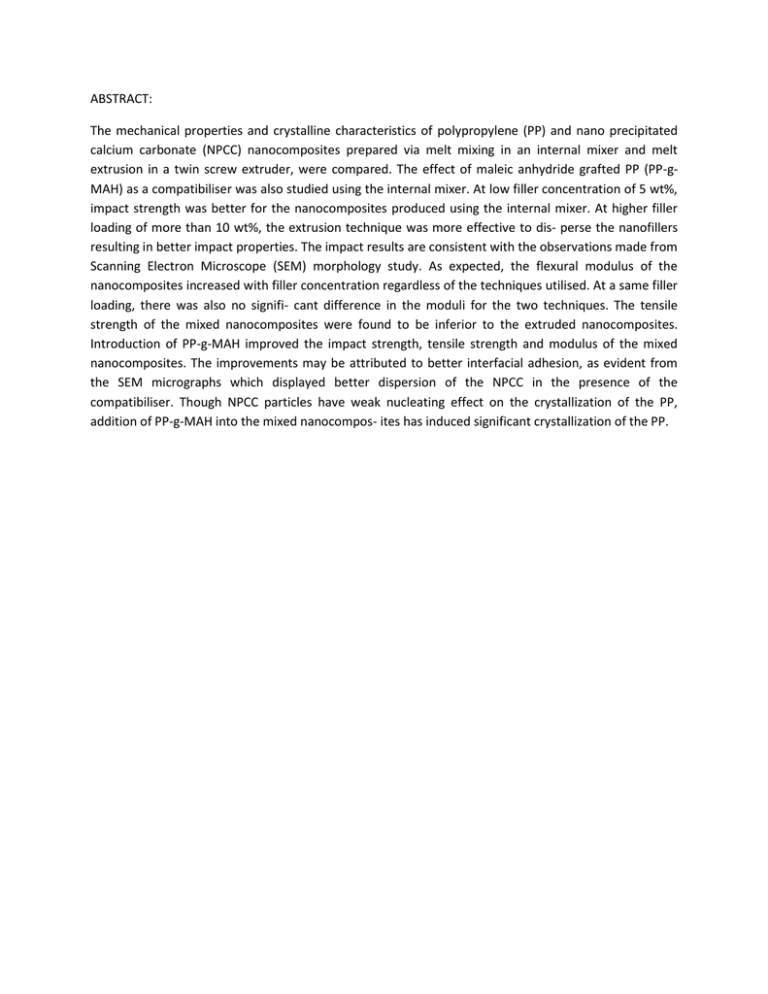
ABSTRACT: The mechanical properties and crystalline characteristics of polypropylene (PP) and nano precipitated calcium carbonate (NPCC) nanocomposites prepared via melt mixing in an internal mixer and melt extrusion in a twin screw extruder, were compared. The effect of maleic anhydride grafted PP (PP-gMAH) as a compatibiliser was also studied using the internal mixer. At low filler concentration of 5 wt%, impact strength was better for the nanocomposites produced using the internal mixer. At higher filler loading of more than 10 wt%, the extrusion technique was more effective to dis- perse the nanofillers resulting in better impact properties. The impact results are consistent with the observations made from Scanning Electron Microscope (SEM) morphology study. As expected, the flexural modulus of the nanocomposites increased with filler concentration regardless of the techniques utilised. At a same filler loading, there was also no signifi- cant difference in the moduli for the two techniques. The tensile strength of the mixed nanocomposites were found to be inferior to the extruded nanocomposites. Introduction of PP-g-MAH improved the impact strength, tensile strength and modulus of the mixed nanocomposites. The improvements may be attributed to better interfacial adhesion, as evident from the SEM micrographs which displayed better dispersion of the NPCC in the presence of the compatibiliser. Though NPCC particles have weak nucleating effect on the crystallization of the PP, addition of PP-g-MAH into the mixed nanocompos- ites has induced significant crystallization of the PP.

